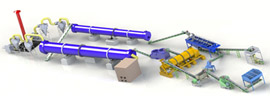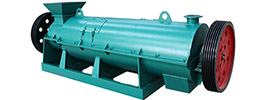As a natural organic growing medium, coconut coir (derived from coconut husk fibers) offers multiple advantages for plant cultivation, rooted in its unique physical structure and chemical properties. Below are the key benefits and scientific principles behind its effectiveness:
1. Optimized Root Environment for Enhanced Root Development
-
High Aeration:
The fibrous structure of coconut coir creates abundant pores, ensuring excellent air circulation.
Impact: Prevents root suffocation (critical for hydroponics or dense planting) and stimulates root hair growth, boosting nutrient absorption.
-
Balanced Water Retention:
Coir can absorb up to 8–10 times its weight in water and releases it gradually via capillary action.
Impact: Maintains stable moisture levels around roots, reducing irrigation frequency (ideal for low-maintenance or arid-region gardening).
-
Sterile Environment:
Naturally free of pathogens, weed seeds, and chemical contaminants.
Impact: Lowers risks of root rot and damping-off diseases, minimizing pesticide use—perfect for seedlings and cuttings.
2. Improved Soil Structure and Long-Term Fertility
-
Prevents Soil Compaction:
Coir particles loosen heavy clay soils, increasing porosity.
Impact: Enhances soil aeration and microbial activity, fostering a healthy ecosystem.
-
Biodegradability:
Gradually decomposes into humus, enriching soil organic matter.
Impact: Improves soil aggregation and nutrient-holding capacity, reducing reliance on synthetic fertilizers over time.
-
Neutral pH (5.5–6.8):
Suitable for most plants, avoiding nutrient uptake issues caused by acidic/alkaline imbalances.
Comparison: Peat moss (pH 3.5–4.5) requires pH adjustment for many crops.
3. Efficient Nutrient Utilization and Reduced Waste
-
Slow-Release Nutrient Storage:
Though low in inherent nutrients (N<0.5%, P<0.1%, K<1%), coir adsorbs and gradually releases applied fertilizers.
Impact: Prevents nutrient leaching, improving fertilizer efficiency and reducing application frequency.
-
Synergy with Fertilizers:
When paired with controlled-release fertilizers, organic compost, or liquid nutrients, coir acts as a "nutrient reservoir."
Example: Tomatoes grown in coir-based hydroponics with drip irrigation achieved 20–30% higher fertilizer efficiency.
4. Versatility Across Diverse Applications
-
Soilless Cultivation:
Used alone or mixed with perlite/vermiculite in hydroponics, aeroponics, or container gardening.
Advantage: Clean, pest-free, and space-efficient for indoor or urban farming.
-
Soil Amendment:
Adding 30% coir to saline or poor-quality soils reduces electrical conductivity (EC) by 40% and improves seedling emergence.
-
Plant-Specific Adaptability:
- Moisture-Loving Plants (e.g., ferns, monstera): Mimics tropical rainforest conditions.
- Fleshy-Rooted Plants (e.g., orchids, phalaenopsis): Prevents root rot through superior drainage.
- Salt-Sensitive Crops (e.g., strawberries, lettuce): Requires rinsing to lower salt content but outperforms peat moss post-treatment.
5. Environmental and Economic Advantages
-
Sustainability:
A byproduct of coconut processing, coir repurposes agricultural waste.
Comparison: Peat moss harvesting damages wetland ecosystems, leading to bans in several European countries.
-
Cost-Effectiveness:
Compressed coir bricks are lightweight and expand 8–10x when hydrated, reducing shipping costs.
Long-Term Savings: Improves soil health, cutting future irrigation and fertilization expenses.
6. Real-World Applications
-
Greenhouse Vegetable Production:
Dutch growers using coir bag systems with drip irrigation report tomato yields of 60 kg/m² annually (vs. 30 kg/m² in traditional soil).
-
Home Gardening:
Mixing coir with pine bark (1:1) for blueberry cultivation in alkaline soils increases fruiting rates.
-
Ecological Restoration:
In northwest China’s desert regions, coir mixed with superabsorbent polymers boosted sea buckthorn survival from 30% to 75%.
Key Considerations and Optimization Tips
- Salt Management: Rinse coir 2–3 times before use to reduce EC to <0.5 mS/cm.
- Nutrient Supplementation: Regularly apply liquid or slow-release fertilizers to prevent deficiencies (e.g., nitrogen, calcium).
- Blending: Combine with perlite (1:1) or garden soil (3:1) to balance water retention and drainage.
By optimizing root zones, enhancing nutrient efficiency, and improving soil health, coconut coir provides an ideal physical and chemical environment for plant growth. Its sustainability and versatility make it a top choice for modern agriculture and home gardening, particularly for growers seeking efficient, low-maintenance solutions.
 Send us a Email
Send us a Email Wulong Industrial Cluster
Wulong Industrial Cluster Have any question?
Have any question?



















